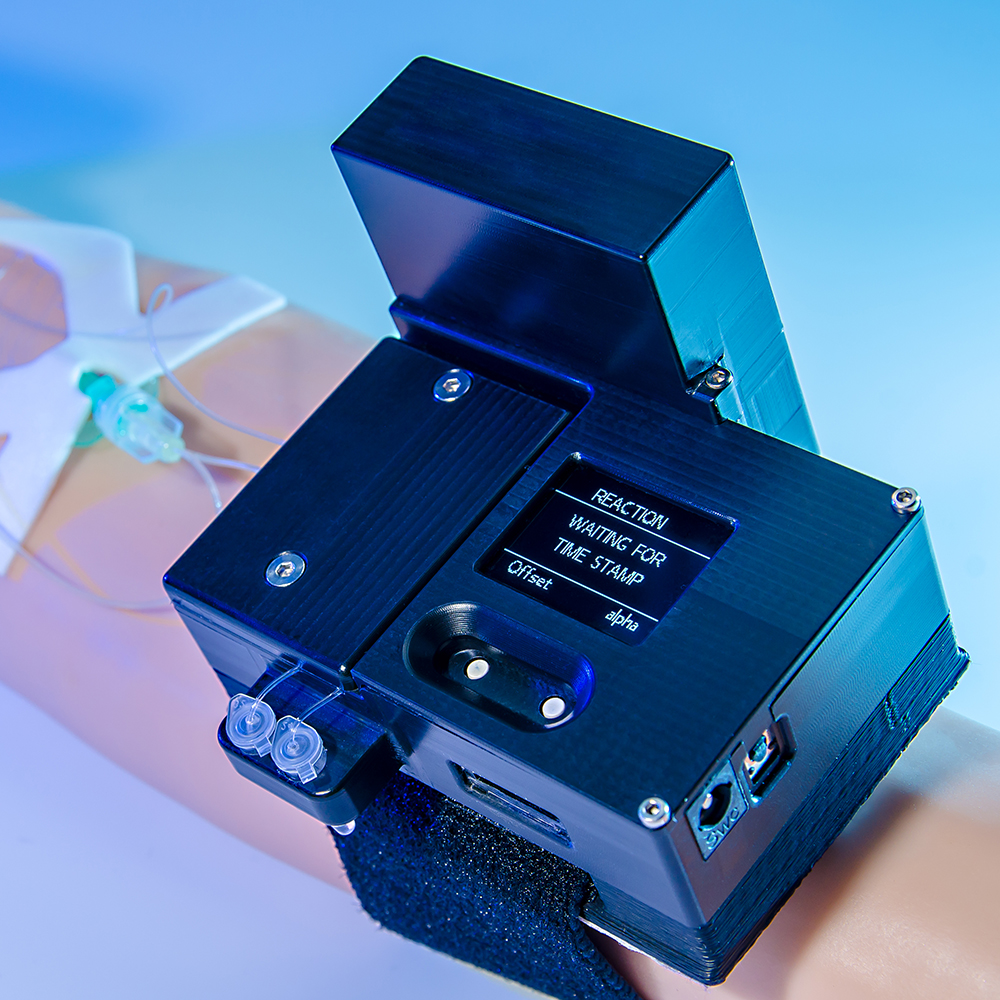Portable optical glucose sensor

During the last decades, especially in the Northamerican, European and Asian region, diabetes has become a widespread disease. The therapy of diabetes, including the related diseases, represents a big cost factor for the corresponding health care systems. In this context an improved long-term management of the disease is urgently required, both, for patients in clinical environment and at home. One approach is based on portable sensors which are continuously measuring and are combined with an automated closed-loop dosage of insulin. We have been developing a portable optical sensor that principally is able to measure the glucose concentration without any time restrictions. Enzyme-based sensors, combined with electrochemical detection, in comparison, can only be used for a couple of days, since the enzyme is continuously consumed.
Operating principle
The sensor is based on the principle of transmission spectroscopy in the near infrared range (NIR), is measuring continuously and provides the required accuracy over the entire physiologically relevant concentration range between approximately 50-300mg/dl. Furthermore, the sensor can be integrated into an ICT-platform via wireless communication. Initially, the implementation started with an intravenous or subcutaneous minimally invasive micro dialysis. The dialysate is measured in transmission against a reference solution using a microfluidic disposable chip, connected to LED’s, addressing defined wavelength bands. The system is completely non-dispersive (without spectrometer), thereby being simple and cost efficient. The entire electronics together with the optical components, the display and the disposable chip are mounted in a compact, portable unit. The chip can be produced via conventional polymer molding technologies. Fluctuations of the light source are compensated with an internal reference measurement. When the system is integrated within an implantable catheter with fiber optical coupling, the lag time resulting from the micro dialysis can be eliminated.
Properties and application areas
Reference measurements with a lab spectrometer allowed for verification of the measuring principle. At a signal to noise ratio of 10000:1 a theoretical limit of detection (LOD) results, which is approximately 18 mg/dl. This was experimentally verified with a chip-based system using glucose dissolved in water. Within a clinical study, using intravenous microdialysis an LOD of 48 mg/dl with a MARD (Mean Relative Absolute Error) of 13.8%, within a study, using subcutaneous microdialysis an LOD of 36mg/dl with a MARD of 8.5% could be achieved. Signal drift can be avoided by controlled temperature conditions. A bubble chamber within the microfluidic chip allows for avoiding the formation of micro bubbles in the dialysate, leading to corrupt data.
Our research & development services
Based on various spectroscopic methods we develop cost-optimized and miniaturized on-line/off-line sensors which are characterized by a high level of integration and robustness. In the course of technological feasibility studies we offer spectroscopic measurements to our customers, also relying on the spectrometers available at our institute.
Related spectroscopic device development:
- Determination of the water content, the oxidation and the total base number (TBN) via MIR spectroscopy,
- determination of the hydrogen peroxide and sulfuric acid content in DSP solutions via UV-VIS spectroscopy,
- detection of chemical compounds in catalyst layers via Raman spectroscopy,
- measurement of the glucose concentration in blood or interstitial fluid via NIR spectroscopy,
- detection of fluorescent light for cell counting applications or for monitoring during a PCR process.
Funded by: 7th Framework Programme of the European Commission, project reference 248590.
 Fraunhofer Institute for Microengineering and Microsystems IMM
Fraunhofer Institute for Microengineering and Microsystems IMM